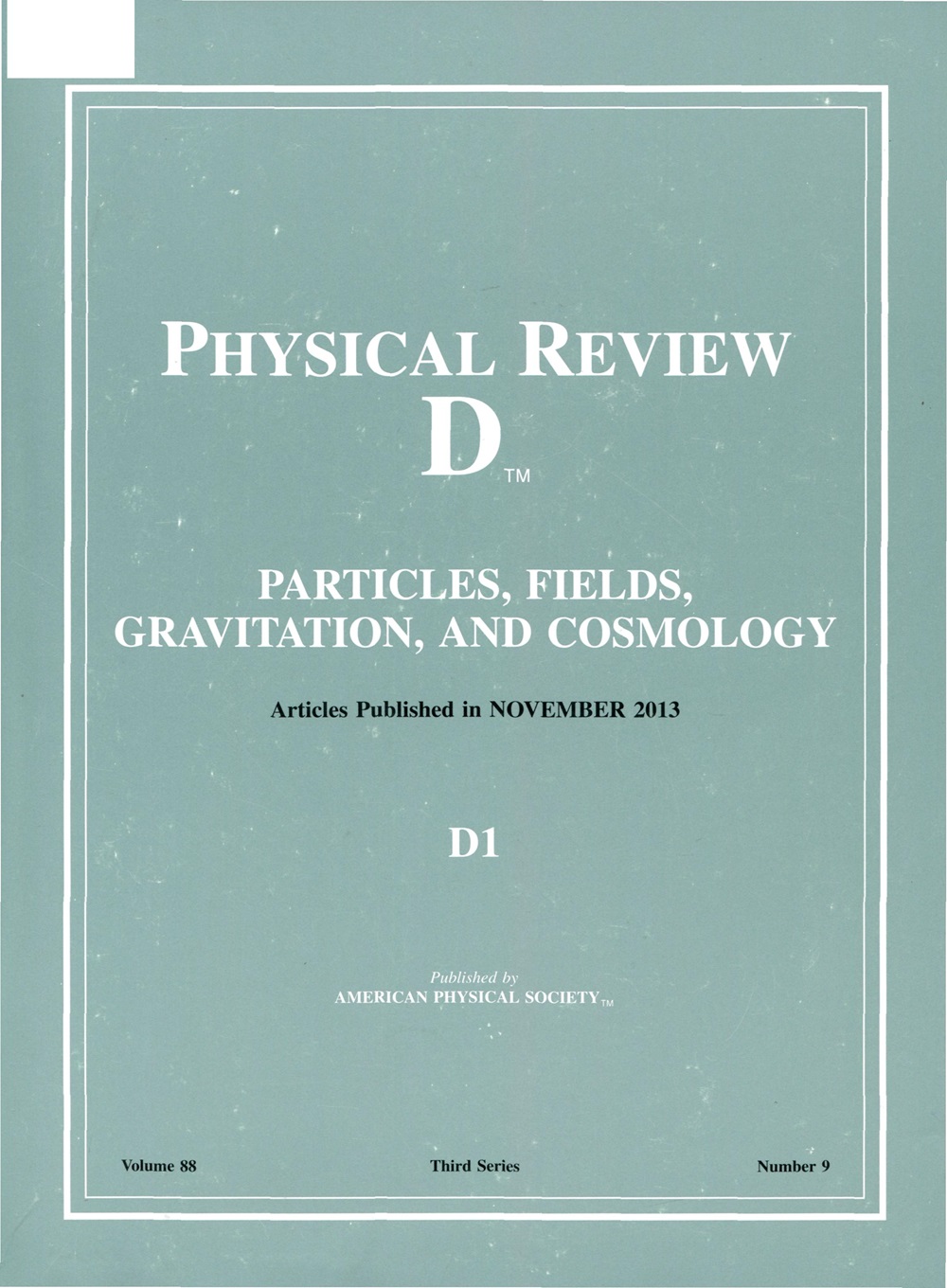由剪切应力产生的琴的重力形状因子D
IF 5.3
2区 物理与天体物理
Q1 Physics and Astronomy
引用次数: 0
摘要
基于我们最近对协变光锋动力学中应力-能量张量的强子矩阵元的分析,我们从剪切应力T12中提取了谐波引力形式因子D(Q2)。这与我们最近使用(光前)能量密度T+−的工作形成对比。事实上,通过比较这两种电流,我们确定了违反电流守恒的条件。基于基光前量化的数值结果表明,违和效应较小,从两个电流中提取的D项彼此接近,从而验证了我们之前使用T+−的工作。2025年由美国物理学会出版本文章由计算机程序翻译,如有差异,请以英文原文为准。
Gravitational form factor D of charmonium from shear stress
Based on our recent analysis of the hadronic matrix element of the stress-energy tensor in covariant light-front dynamics, we extract the charmonium gravitational form factor D(Q2) from shear stress T 12 T + − D T + − Published by the American Physical Society 2025
求助全文
通过发布文献求助,成功后即可免费获取论文全文。
去求助
来源期刊

Physical Review D
物理-天文与天体物理
CiteScore
9.20
自引率
36.00%
发文量
0
审稿时长
2 months
期刊介绍:
Physical Review D (PRD) is a leading journal in elementary particle physics, field theory, gravitation, and cosmology and is one of the top-cited journals in high-energy physics.
PRD covers experimental and theoretical results in all aspects of particle physics, field theory, gravitation and cosmology, including:
Particle physics experiments,
Electroweak interactions,
Strong interactions,
Lattice field theories, lattice QCD,
Beyond the standard model physics,
Phenomenological aspects of field theory, general methods,
Gravity, cosmology, cosmic rays,
Astrophysics and astroparticle physics,
General relativity,
Formal aspects of field theory, field theory in curved space,
String theory, quantum gravity, gauge/gravity duality.
 求助内容:
求助内容: 应助结果提醒方式:
应助结果提醒方式:


